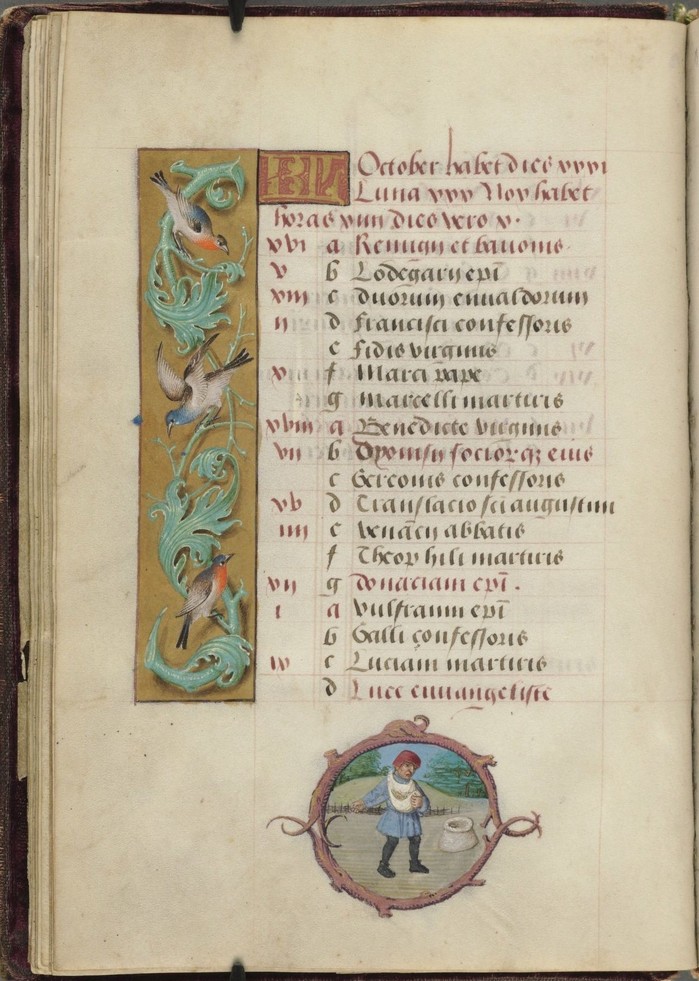Another library joins the database with the addition of Ms.1185 from the Bibliothequè de l’Arsenal, located in Paris near the former site of the Bastille. This is a 15th C. Book from Cambrai, now in northern France. The book is in a very high quality bâtarde hand, with multiple flourished (nearly cadel) capitals in the calendar test. There are also illusionistic borders, with shell-gold backgrounds, on the outer edge of every page, both text and calendar, except for those with more complex decorative programs.
The text of the calendar is in French with some very specific-to-Cambrai entries, such as Bishop Gaugericus (feast in red on August 11 (370), Octave on August 18 (4007), elevation on September 24 (3803)).
An interesting variant is the indication of the Epiphany (January 6 (1488)) (see f.1r below). In French calendars this is usually spelled as La Tiphaine (or a varient thereof), however in MS.1185 it is spelled in hybrid La epyphanie n[ost]re s[iegneu]r. The article is never seen in Latin calendars, but neither Epyphanie nor vocal variants, are seen in French Calendars. The closest match to this entry, oddly, is the early 16th C. Ventian calendar in Houghton MS Typ.1000
(DB Id: 265)
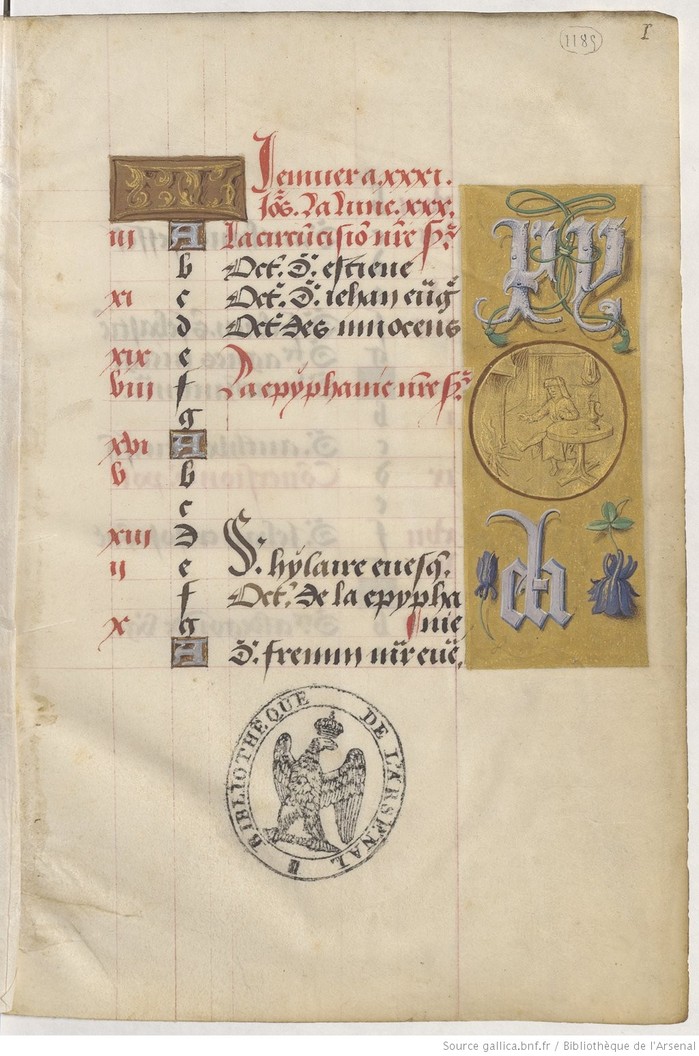
Houghton Library MS Typ 51 is a tiny (see below with iPhone) Book of Hours from France, dated to 1552. Though the title page and some running titles are in French, all of the prayers and the Calendar are in Latin. The calendar is mostly complete, 340 feasts and a few zodiac entries, but has enough blanks that it isn't clear it was ever intended to be full. The saints are a mish-mash, many are weeks or even months off of the proper date. Interestingly, unlike many of the complete Parisian calendars, some, but not nearly all, of the saints have titles (Bishop, virgin, etc). Some of the unusual errors are: Abdon et sennem (Abdon and Sennen) on March 30, their feast is July 30; Scolastice (St. Scholastica) on April 10 instead of February 10; Cleti pape (Pope Cletus) on November 5th, October 12 is his closest feast. Besides these large errors there are numerous saints shifted by 2-4 days, some be as much as a week or 10 days within the same month. There are also many unidentified saints who might be shifted from elsewhere in the calendar. In total I count 29 errors, or almost 10% of the total entries, not counting unidentified saints who might be erroneous.
(DB Id: 224)
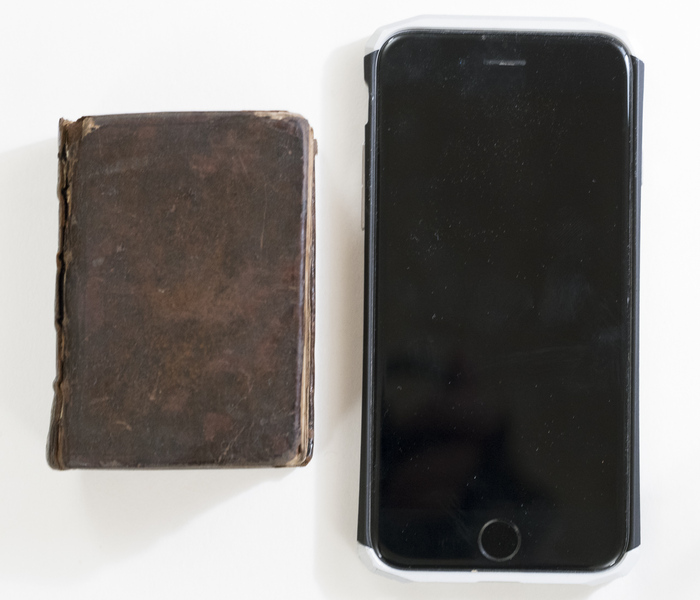
(Taking a break from the Morgan Library) Houghton Library Richardson 34 is an English book, use of Sarum, from the late 15th century. The calendar has some interestingly English saints, like Swithun and Oswald, and the usual Reformation edits, all of the "pape" notations and reference to Thomas Becket were erased and then re-added in a much later hand. St. Evaristus, who was a pope in the first century, and St. Hyginius (See f.1r below), pope in the second, were also added in that same later hand, though there's no evidence they there earlier. Otherwise the calendar is exceedingly accurate and has many saints added alongside the larger feasts, such as St. Hillary alongside the Epiphany on January 6 (see f.1r below)
(DB ID: 190)
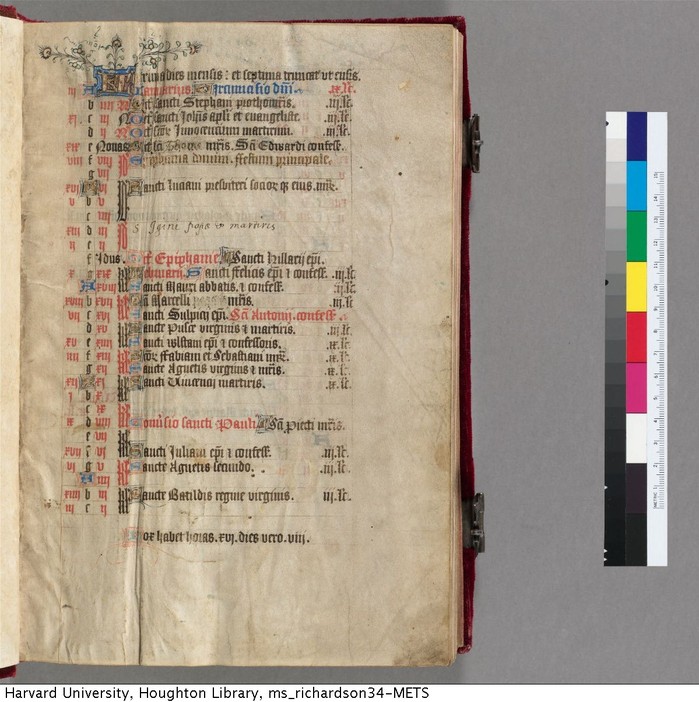
Richardson 10, from Harvard's Houghton Library, is a profoundly weird French Book of Hours, circa 1515. The calendar is Parisian-ish, nearly full, with mostly the standard Paris saints, but not a full Paris-set, i.e. January starts with the Circumcision and lacks St. Geneieve (see f.1r below). After the calendar the book contains the Lords Prayer (in French) and 7 sets of Hours, possibly as one for each day of the week. These Hours include both the usual ones -- Hours of the BVM, Hours of the Holy Cross, the unusual ones -- Hours of Passion. Then it has some completely made-up things -- the Hours of All Saints, the Hours of St. Barbara, a Mass against Pestelence, etc. There are no Gospel pericopes and no obvious Litanies, though there are prayers to St. Catherine and St. Martin of Tours. To round it out, the cover is about 50 years later than the text, brass (or bronze perhaps), with a layer of red paint carved back to reveal the arms and emblem of Catherine de Medici.
(DB ID: 189)
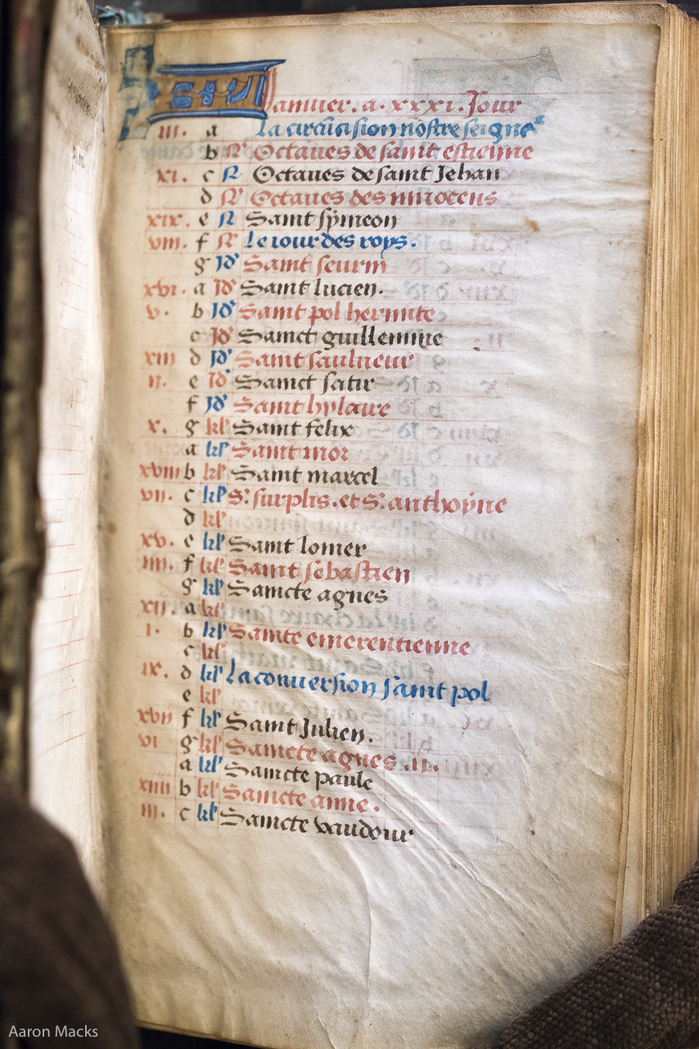
Houghton Library Typ 32 is a mostly plain book of hours, Use of Paris, from about 1420. There's very little decoration, but when there IS, it's impressive, unadorned, unbordered text gives way to a full-block miniature with brightly-colored and gilded foliate borders on all 4 sides. The calendar, sadly, is entirely of the plain category, nothing but the 2-line KL at top to break up the black/red complete calendar pages. Even the text is plain: no double-saint days except the usual 2, St. Leu+Gille and St. James+Christopher; no titles at all; no Egyptian verses or other text outside the calendar apart from the name of the month. The beginning of July (f.7r below) gives a sample of the general feel, though this page has one slightly unusual element. On the 6th, there is the Octave for the Feast of Sts. Peter and Paul, which is very common to see. It is rare, however, to see it with just Peter's name. Usually both are named, or if one dropped, Paul stands alone
(DB Link: 156)

At first blush Harvard's Houghton Library ms Lat 132 is a somewhat unremarkable Use of Rome Hours from Bruges. Though it has 12 lovely miniatures in the style of the "Gold Scrolls group", the calendar is rather boring, red and black with red strikethroughs for medium-importance days like vigils. It was updated at least 2 seperate times, with a second hand writing in black Gothic similar to the original and a third hand in a later batarde . Hidden in it, however, is an interesting clue to the literacy of its owners, October 9th(see f.Fv below). Written in red, this is the Feast of St. Denis, patron of the eponymous cathedral just north of Paris and the martyr for whom Montmartre is named. Denis is a adaptation of his actual Greek/Latin name, Dionysus. The first scribe wrote Dyonisi Epi (Dionysus Bishop), as expected for a calendar in Latin, but the second scribe appended "S. Denis", either not understanding that they are the same, or for a patron who might not know the Latin.
(Link to the DB: 135)
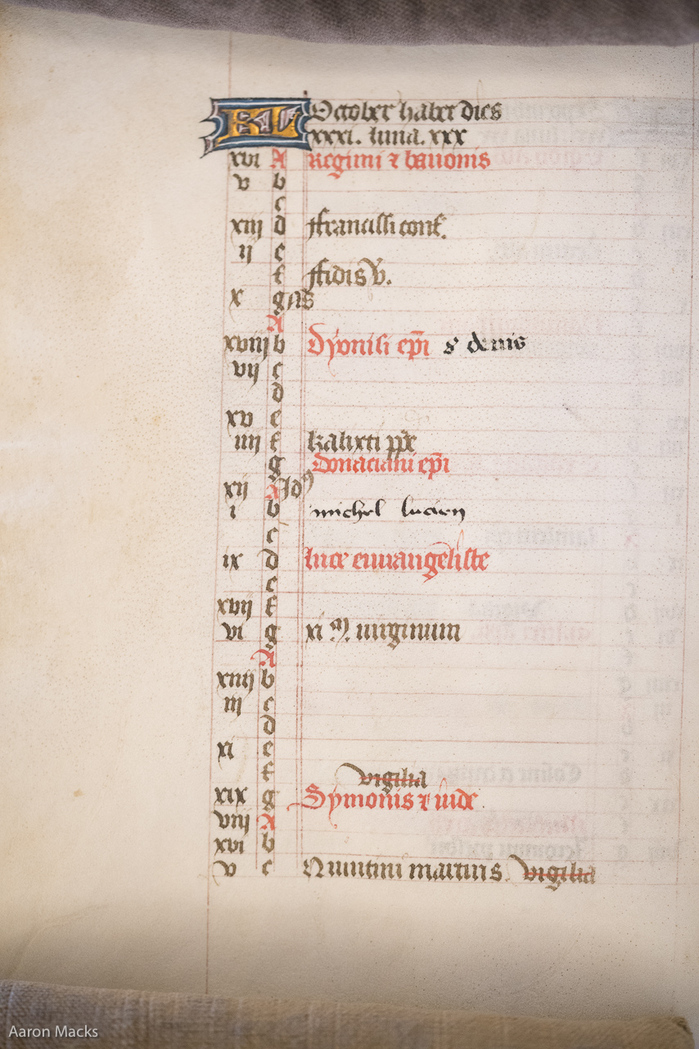
Harvard's Houghton Library MS Typ 553 is a weird Use of Rome Book from the late 15th century, only localized to "Northern Italy". The calendar is unevenly populated, 5 saints in March compared to 20 in January, and has a very large proportion of "high" importance (red) names, more even then normal rank saints. In addition to the usual saints, there are also most of the zodiac signs indicated as well as some here to for yet unidentified liturgical indications(see line 12 in May, f3r below). The scribal work is also unusual, there is no horizontal ruling at all, so the saints are often not alligned with the date information.
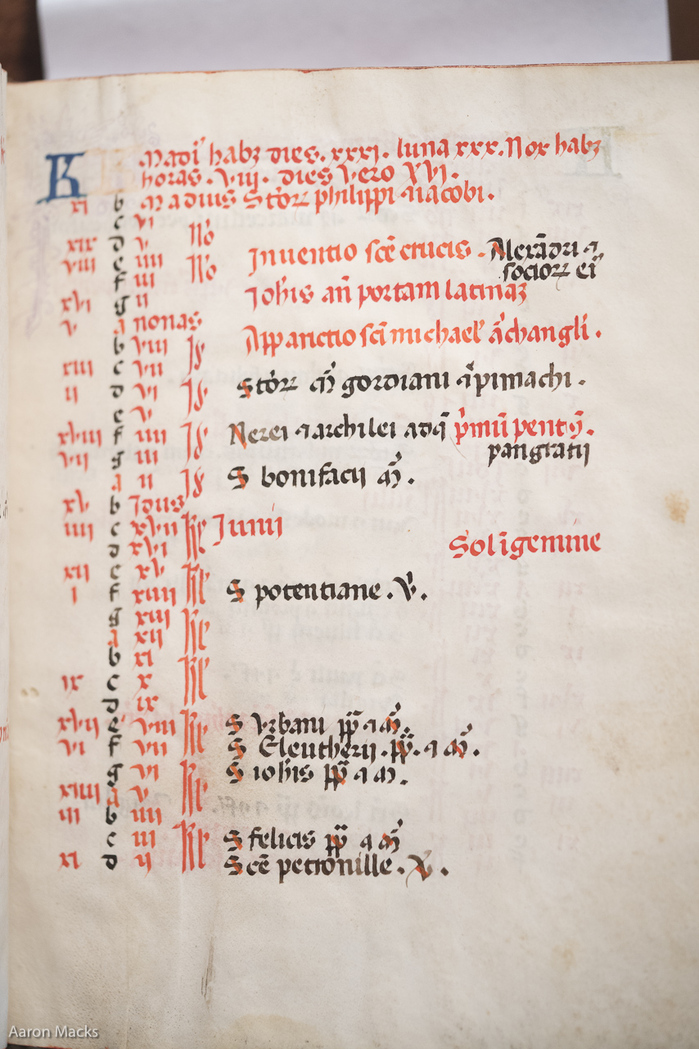
Harvard's Houghton Library MS Lat 133 is a somewhat unremarkable Book of Hours, but the calendar is unusually messy. There are rather few entries, only 171 saints, and those that are there are error prone and poorly scribed. The red saints were written at a different time from the black, and some were neglected, at minimum St Laurence was forgotten, though the octave(Aug 17) was properly added. The end of July has many of the possible errors: seven saints have been shifted up one day and the feast of Mary Magdalene is 3 days off (see f.7v below). Interestingly there are no vigils in the entire calendar.
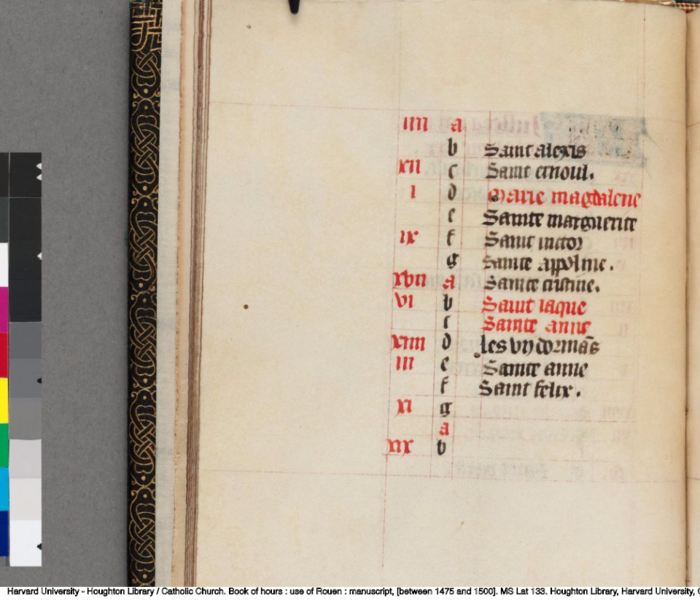
Thanks to the assistance of an indulgent librarian, I was able to finish the gorgeous, though fragmentary Houghton MS Typ 213, a Italian book from 1485-1494 written and illuminated by Bartolomeo Sanvito. The prayers are Use of Rome, but the calendar is localized to Padua. It's use of brown and gold ink made transcribing from photographs challenging, The first 1/2 of February, f.2r, is below
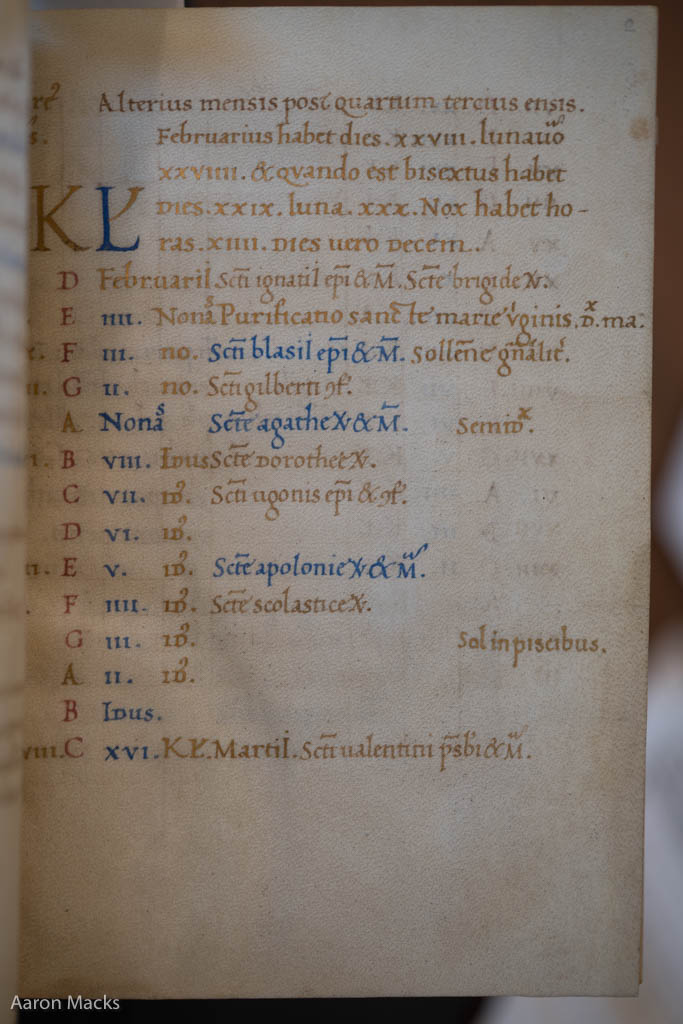
Another manuscript from the Richardson collection at Harvard's Houghton Library, Richardson 9 is a northern book, Use of Rome, from circa 1500, written in a very practiced Batarde hand. There are remarkably few errors in the completely-populated calendar and although it is not listed as such in the catalogues, the signs point to Bruges as the source of the calendar. The start of October (f.12v below) shows an interesting listing on the 3rd, Sts. Ewald and Ewald, 2 priests who died on the same day, are listed as "Duorum Enwaldorum", "The Two Enwalds"
